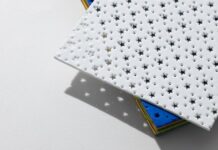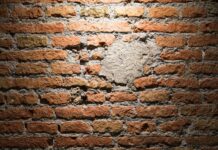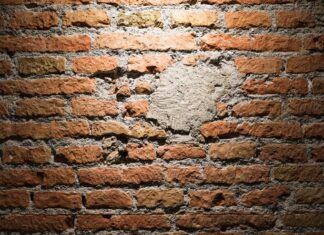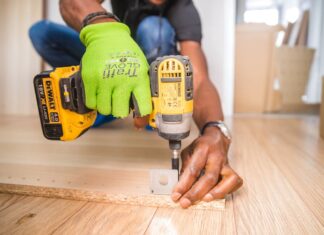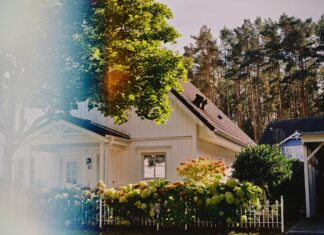Do you know why people of Sydney look for Remedial Waterproofing solutions? Remedial waterproofing is a crucial aspect of building maintenance that should not be overlooked, especially in a city like Sydney, where heavy rainfall and coastal proximity pose significant challenges. The unique climate and environmental conditions in Sydney make it essential for building owners and managers to prioritize waterproofing solutions to safeguard their structures against potential water damage.
Today, we will explore the significance of Remedial Waterproofing Sydney and discuss why buildings need to invest in this preventive measure to ensure the longevity and structural integrity of their properties and help you to understand a detailed idea of what is remedial waterproofing.
Understanding Sydney’s Environmental Factors
Table of Contents
Sydney’s geographic location and climate play a vital role in understanding the necessity of remedial waterproofing. With its proximity to the ocean and a temperate climate, the city experiences high levels of humidity, significant rainfall, and occasional storms. These environmental factors contribute to increased moisture levels that can penetrate building structures over time, leading to issues such as mold growth, rot, and structural damage.
Protecting Buildings Against Water Intrusion
2.1 Structural Integrity and Durability:
One of the primary reasons buildings in Sydney should invest in remedial waterproofing is to protect their structural integrity and enhance their durability. Water intrusion can gradually weaken the foundation, walls, and other critical components of a building, compromising its stability and posing safety risks. Waterproofing solutions, such as sealants, membranes, and coatings, create a barrier against moisture penetration, preventing the formation of cracks, rust, and corrosion, thereby increasing the lifespan of the structure.
2.2 Health and Safety Concerns:
Water damage not only affects the building’s physical structure but also poses health and safety concerns for occupants. Persistent moisture can create an ideal breeding ground for mold and mildew, leading to respiratory issues, allergies, and other health problems. Moreover, water infiltration can damage electrical systems, increasing the risk of short circuits and potential fires. By implementing remedial waterproofing measures, building owners can ensure a safe and healthy environment for occupants, reducing the chances of structural deterioration and associated health hazards.
Cost-Effectiveness and Long-Term Savings
While some building owners might consider remedial waterproofing as an additional expense, it is crucial to recognize its long-term cost-effectiveness. Investing in preventive measures upfront can significantly reduce the need for extensive repairs and renovations down the line. Waterproofing solutions act as a protective shield, preventing water-related damage and minimizing the need for costly repairs caused by leaks, mold remediation, or structural reinforcements.
Moreover, a waterproofed building is likely to have lower energy consumption. By preventing water intrusion, insulation materials stay dry and retain their thermal properties, reducing the need for excessive heating or cooling. This leads to energy savings and lower utility bills, making remedial waterproofing a wise investment for both the short and long term.
Compliance with Building Codes and Regulations
In Sydney, building codes and regulations require appropriate waterproofing measures to be in place. Failing to comply with these regulations can result in legal consequences and costly penalties. By ensuring that their buildings adhere to the established standards, owners not only avoid legal troubles but also demonstrate their commitment to maintaining a safe and compliant environment for occupants.
How good is doing remedial basement waterproofing?
Remedial basement waterproofing is an excellent approach to address existing water intrusion and moisture-related issues in basements. It involves identifying the source of water infiltration and implementing appropriate solutions to prevent further damage and create a dry and habitable space. Here are some key reasons why doing remedial basement waterproofing is a good decision:
Protects the Structural Integrity: Water infiltration can weaken the foundation and structural components of a building, including the basement walls and floors. Remedial basement waterproofing helps reinforce these elements, preventing further deterioration and ensuring the long-term stability and durability of the structure.
Prevents Mold and Mildew Growth: Basements are susceptible to high humidity levels and moisture buildup, which can create an ideal environment for mold and mildew growth. These microorganisms not only cause unpleasant odors and cosmetic issues but can also pose health risks to occupants. By waterproofing the basement, you can effectively control moisture and inhibit the growth of mold and mildew.
Preserves Property Value: Waterproofing the basement is an investment that can significantly enhance the value of your property. A dry and usable basement adds functional space to your home, increasing its appeal to potential buyers. Additionally, a well-maintained basement with no water-related issues signals to buyers that the property has been properly cared for and reduces the likelihood of future repair expenses.
Prevents Water Damage: Water intrusion in basements can lead to significant damage, including rotting of wood, corrosion of metal fixtures, damage to electrical systems, and deterioration of stored items. By addressing the underlying causes of water infiltration through remedial waterproofing, you can effectively protect your belongings and prevent costly repairs and replacements.
Energy Efficiency: A waterproofed basement improves energy efficiency by reducing moisture and preventing air leaks. Moisture can impact insulation effectiveness, leading to increased energy consumption for heating and cooling. By eliminating moisture infiltration, remedial waterproofing can help maintain stable indoor temperatures and reduce energy bills.
Enhances Livability: A dry and well-maintained basement offers additional livable space that can be utilized for various purposes, such as a family room, home office, gym, or storage area. By addressing moisture issues and creating a comfortable environment, remedial basement waterproofing allows you to maximize the usability and functionality of your home.
What is the concept of remedial membrane waterproofing?
Remedial membranes waterproofing refers to the application of specialized waterproofing membranes as a solution to address existing water infiltration or moisture-related issues in buildings. It involves the installation of membrane systems that act as a barrier, preventing water from penetrating the structure and causing damage.
Here are some key aspects of remedial membranes waterproofing:
Purpose:
The primary purpose of remedial membranes waterproofing is to stop water intrusion and provide effective protection against moisture. This method is commonly used in areas such as basements, roofs, balconies, and concrete structures that are prone to water leakage or damage.
Types of Membranes:
There are various types of waterproofing membranes available for remedial applications. These include bituminous membranes, modified bitumen membranes, synthetic rubber membranes (EPDM), polyurethane-based membranes, and liquid-applied membranes. The selection of the appropriate membrane depends on factors such as the location, type of substrate, level of water exposure, and project requirements.
Installation Process:
Remedial membranes are typically installed by trained professionals or waterproofing contractors. The process involves preparing the surface by cleaning, repairing any existing damage, and ensuring a smooth substrate. The membrane is then applied in accordance with the manufacturer’s instructions, either as sheets, rolls, or liquid coatings. Proper overlapping or sealing techniques are employed to create a continuous, watertight barrier.
Advantages:
Remedial membranes waterproofing offers several advantages. Firstly, it provides an effective solution for stopping water infiltration, preventing further damage to the structure and its components. Secondly, membranes can be applied to various substrates, including concrete, metal, and wood, making them versatile and suitable for different types of buildings. Additionally, membranes can be customized to accommodate complex shapes and detailing, ensuring comprehensive coverage and protection. Remedial membranes also offer long-term durability, resistance to UV exposure, and flexibility to withstand building movements or settlement.
Compatibility and Integration:
Remedial membranes waterproofing can be integrated with other waterproofing systems or building elements to provide comprehensive protection. For example, membranes can be combined with drainage systems, such as French drains or sump pumps, to effectively manage and redirect water away from the structure. They can also be integrated with insulation systems to enhance energy efficiency.
Maintenance and Warranty:
Like any waterproofing system, regular inspection and maintenance are essential to ensure the long-term performance of remedial membranes. It is recommended to follow the manufacturer’s guidelines for maintenance and seek professional assistance if any issues arise. Additionally, warranties provided by membrane manufacturers or waterproofing contractors may offer coverage for a specified period, providing peace of mind to building owners.
Conclusion
Remedial waterproofing is an essential consideration for building owners and managers in Sydney. The city’s unique environmental factors, including heavy rainfall, humidity, and coastal proximity, make it imperative to protect structures from water intrusion.
By investing in remedial waterproofing solutions, buildings can preserve their structural integrity, prevent health and safety hazards, reduce long-term costs, and comply with building codes and regulations. Prioritizing waterproofing measures ensures that buildings in Sydney stand strong against the challenges posed by water and provide a safe, durable, and comfortable environment for occupants for years to come.


